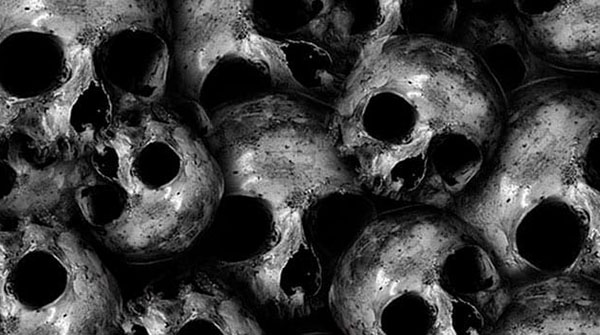 Bubonic plague came to England in the summer of 1348. Popularly known as the Black Death, the disease arrived via a French ship that docked in what is now Weymouth on the south coast. From there, it spread rapidly inland and westwards over the water to Ireland. It was also transmitted across the North Sea to Oslo, courtesy of the regular commercial contacts between south-east England and Norway.
Bubonic plague came to England in the summer of 1348. Popularly known as the Black Death, the disease arrived via a French ship that docked in what is now Weymouth on the south coast. From there, it spread rapidly inland and westwards over the water to Ireland. It was also transmitted across the North Sea to Oslo, courtesy of the regular commercial contacts between south-east England and Norway.
Because medieval records are sketchy, estimates of the death toll vary. But it was enormous by any measure.
Norwegian historian Ole J. Benedictow puts the European mortality rate at 60 per cent, which would translate into roughly 50 million dead people. Others think that’s too high and the true number was perhaps half of that. For England, an estimate of 50 per cent of the population is often used.
The disease, caused by the bacterium Yersinia pestis, was introduced to Europe by virtue of an infected Mongol army besieging a Genoese trading port in Crimea. When the Genoese escaped, the Black Death sailed with them, disembarking in southern Europe in 1347 and making its way to France the following year. Then it was on to England.
Because the disease was new to Europe, there was little natural immunity and those afflicted generally succumbed quickly. The dying process could be particularly grotesque. Oozing tumours appeared in the groin and armpits, followed by fever and vomiting.
Ironically, modernity was no help. To the contrary, it compounded the threat.
For instance, openness to the world – as manifested by trade – provided a natural transmission mechanism. And the fact that ships moved much faster than land traffic accelerated the rate at which the disease travelled. To quote Benedictow, “this speed meant that the Black Death easily moved 600 km in a fortnight by ship: spreading, in contemporary terms, with astonishing speed and unpredictability.”
Similarly, that other emblem of modernity – urbanization – was also problematic. Medieval cities were filthy and the combination of population density and lack of hygiene provided a perfect habitat for contagion.
Medicine, such as it was in the 14th century, was powerless to treat the disease. Instead, the only means of combatting it were to prevent its spread in the first place.
As early as 1348, Venice began to impose a form of quarantine, “closing the city’s waters to suspect vessels, and subjecting travellers and legitimate ships to 30 days’ isolation.” Some other Italian cities followed, but – with the possible exception of Milan – such measures were too little, too late.
Although the plague returned several times in later centuries, the devastating episode we know as the Black Death tailed-off in Europe around 1351. And while it may seem perverse to mention, there were even positive side-effects for some people.
In England, for example, the carnage modified the balance of power between peasants and landowners. Labour was now in short supply and wages rose. With the precipitous drop in population, the competition for land and food abated.
Historian Robert Tombs has a pithy summary: “The pressure that had forced up rents and prices and depressed wages had gone. Surviving tenants threatened to leave unless rents were reduced and feudal obligations dropped.”
Of course, the established order didn’t take this lying down. Legislation like the Ordinance of Labourers and the Statute of Artificers attempted to fix wages and prices at pre-plague levels and restrict labour mobility.
But effectiveness was limited. To quote Tombs again, “Those who were denied better terms simply went elsewhere.”
The balance of power also shifted across the Irish Sea. There, the Black Death’s impact was disproportionately focused on the east coast area radiating out from Dublin. Consequently, it fell largely on the colonist population that had first arrived with the late 12th century Anglo-Norman invasion.
Further, the dramatic population drop in England turned off the demographic surge that had powered expansion of the colonist footprint in Ireland. For the next couple of centuries, the odds had been reconfigured in favour of the pre-invasion Gaelic lordships.
Finally, there’s the work of American biological anthropologist Sharon DeWitte.
Drawing on skeletal remains from London medieval cemeteries, DeWitte concludes that post-Black Death populations tended to live longer and enjoy better health. It remains a matter of conjecture whether this was attributable to improved diet, natural selection culling the genetically frail during the epidemic, or both.
Troy Media columnist Pat Murphy casts a history buff’s eye at the goings-on in our world. Never cynical – well perhaps a little bit.
The views, opinions and positions expressed by columnists and contributors are the author’s alone. They do not inherently or expressly reflect the views, opinions and/or positions of our publication.


